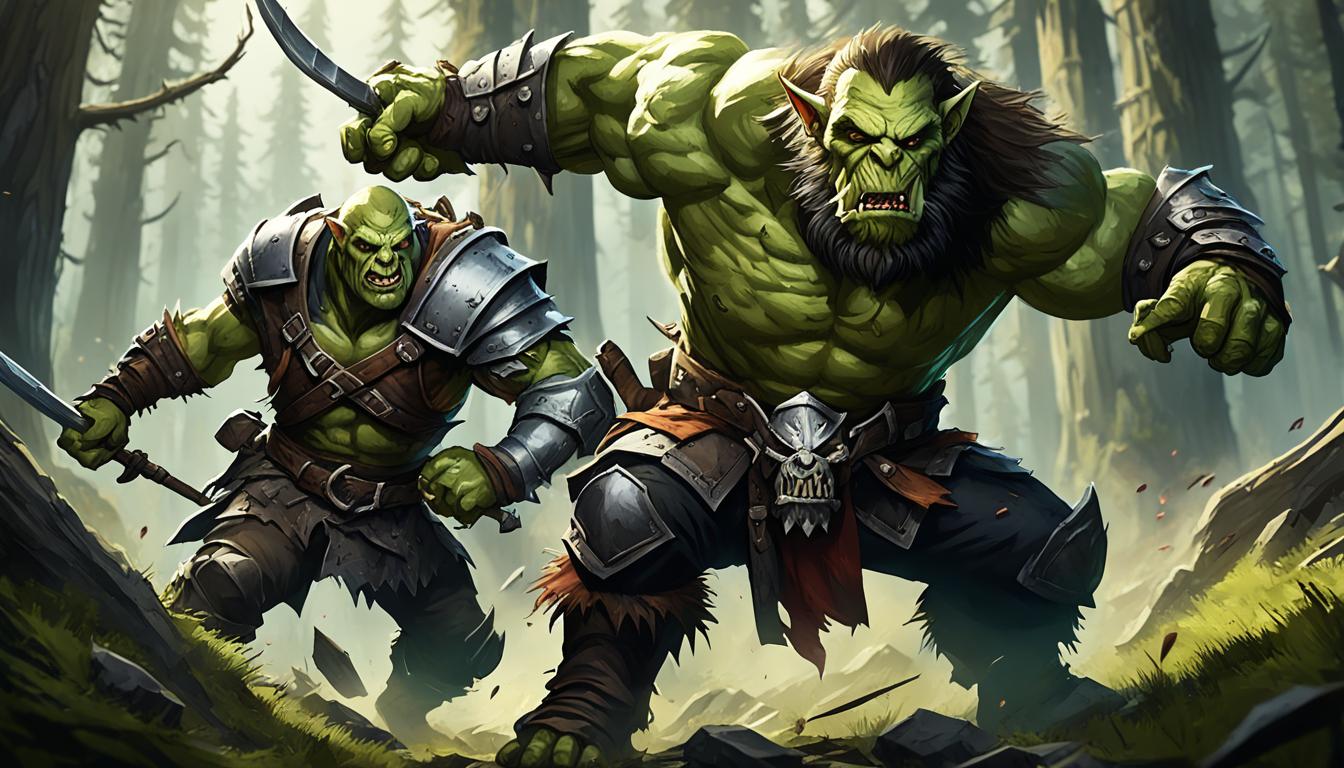Disengage Action 5e: Strategic Movement in D&D
Ever been cornered by foes, looking for an escape untouched? The Disengage action in Dungeons & Dragons 5th edition is your key. It lets you avoid enemy strikes and improve how you move around in a fight. This guide will explore how this D&D 5th edition combat mechanic can up your game.

Key Takeaways
- The Disengage action allows characters to safely move away from enemies without provoking opportunity attacks.
- Certain classes and races, such as Rogues, Monks, and Goblins, have additional benefits when using the Disengage action.
- Disengage differs from the Dodge action, which focuses on reducing the likelihood of being hit rather than preventing opportunity attacks.
- Tactical applications of the Disengage action include retreating, repositioning, bypassing enemies, protecting allies, and employing hit-and-run tactics.
- Mastering the use of the Disengage action can significantly enhance your character’s mobility, survivability, and overall combat effectiveness in Dungeons & Dragons.
What is Disengage Action 5e?
In Dungeons & Dragons 5th edition (D&D 5e), the Disengage action lets you move without the risk of being hit by an opportunity attack. This move is perfect for when you need to get away from an enemy safely. It ensures you can change position on the battleground without worrying about getting attacked.
Definition and Purpose
The basic rules of D&D 5e state, “If you take the Disengage action, your movement doesn’t provoke opportunity attacks for the rest of the turn.” This stops enemies from hitting you when you move away. It’s a key move for staying safe while changing your position in a fight.
Rules from the Basic Rules
The basic rules make it clear: you can move safely with Disengage. This action lets you step away from enemies without fear of their counter-attacks. It’s a smart way to ensure your safety when you need to get to a better position in battle.
Avoiding Opportunity Attacks
The Disengage action is all about moving away from danger without getting hit. It’s like a safety net for your character, especially in tough fights. Imagine you’re low on health or needing to get a better position. Disengage lets you do this without becoming an easy target.

Who Can Disengage?
In the game Dungeons & Dragons 5th edition, anyone can Disengage. It doesn’t matter what type of character you are. Some special classes or creatures, though, get extra benefits from Disengaging.
Rogues and Cunning Action
At 2nd level, Rogues get a neat skill called Cunning Action. It lets them Disengage using a bonus action. This means they can get away from enemies & still attack or do more. Rogues are great at quick, hit-and-run moves because of this.
Monks and Step of the Wind
Monks, also starting at 2nd level, can Disengage using Step of the Wind. This skill uses up 1 ki point. It lets Monks jump farther too. This makes them very quick and able to avoid dangerous situations.
Goblins and Nimble Escape
Goblins have a natural skill called Nimble Escape. It helps them Disengage really well as a bonus action. This ability is perfect for moving quickly and avoiding fights.

Disengage vs. Dodge
It’s crucial to know how the Disengage and Dodge actions differ in D&D 5e. Both are defensive moves but serve different purposes. The disengage action 5e keeps you safe from opportunity attacks. Meanwhile, the dodge action 5e makes it harder for enemies to hit you.
Differences in Functionality
Choosing to Dodge in a fight gives attackers a hard time. They roll attacks against you with disadvantage. You also gain the upper hand on Dexterity saves. Essentially, Disengage helps you run away, while Dodge makes you tougher to hit.
When to Use Each Action
Think carefully about your situation before picking a move. Use disengage action 5e when you have to move without getting attacked. Dodge is better when many attacks are likely and you aim to dodge them.
| Disengage Action 5e | Dodge Action 5e |
|---|---|
| Prevents opportunity attacks for the remainder of your turn | Gives you disadvantage on attack rolls against you and advantage on Dexterity saving throws until the start of your next turn |
| Allows you to safely move away from enemies | Focuses on reducing the likelihood of being hit |
| Useful for retreating, repositioning, and bypassing enemies | Valuable when anticipating a lot of incoming attacks |
Tactical Applications of Disengage
The Disengage action is key in D&D fights. It lets you safely move from foes if you’re low on health. This way, you can find a safe spot behind cover. It’s also handy for sneaking past enemies to a certain point.
Some classes, like Rogues and Monks, can Disengage as a bonus action. They get in close to attack. Then, they quickly get out of harm’s way, using clever hit-and-run moves.
Retreating and Repositioning
If your character is low on health, Disengage can save your life. It lets you move away from enemies without getting hit back. You can find a safe place or join your friends again without the risk.
This move can really make the difference. It could help you survive the fight or fall prey to your enemies.
Bypassing Enemies
Sometimes, you must get to a special spot on the battlefield. But you want to avoid a fight. Disengage lets you move past foes without them hitting you.
It’s great for getting to important places, like helping a friend or surprising an enemy. And you do it without drawing too much attention or taking hits.
Protecting Allies
Using Disengage smartly, you can shield your allies from direct attacks. You stand in between, becoming a barrier. This makes sure the enemy’s eyes are on you, not on your weaker friends.
It’s a powerful way to keep your team safe. This lets everyone do their part in the battle without worrying too much.
Hit-and-Run Tactics
Rogues and Monks excel at hit-and-run moves thanks to Disengage. They move in, strike, then get out quickly. This keeps them safe from counterattacks, slowly wearing down the enemy.
It’s a sneaky but effective method. Perfect for weakening enemies without putting yourself at too much risk.

Disengage Action 5e in Combat
The Disengage action is key in D&D 5e combat. It lets characters move without triggering opportunity attacks. This is helpful when trying to gain a better spot on the battlefield, like flanking foes or protecting friends. It helps characters set up for powerful attacks.
Movement in Combat
Timing the Disengage action right is vital. It stops opportunity attacks, making positioning more strategic. Characters get to move freely. It’s great for those who need to adjust quickly or get out of harm’s way.
Avoiding Attacks of Opportunity
With Disengage, moving doesn’t open them to free hits. This is crucial for those wanting to stay away from close combat. It’s especially helpful for weaker characters or those who attack from afar.
Tactical Positioning
Disengage helps players place their characters better. They can move to the sides of enemies, help friends flank, or protect party members in danger. This kind of strategy boosts their strength and coordination.
Conclusion
The Disengage action in D&D 5e is a valuable tactic. It shows how important defense can be. It’s key for rogues, monks, fighters, and anyone else. Knowing when to pull back keeps you alive in battle.
Using the disengage action 5e well makes your character better. It lets you move without being hit. This means you can help your friends and dodge danger. Learning about d&d 5th edition rules and combat mechanics shows the power of this move. It can give you a big advantage in any fight.
Next time you’re in a tough spot, remember the Disengage action. It’s your key to survive and win. With this skill, you’re one step closer to mastering d&d 5th edition tactics.